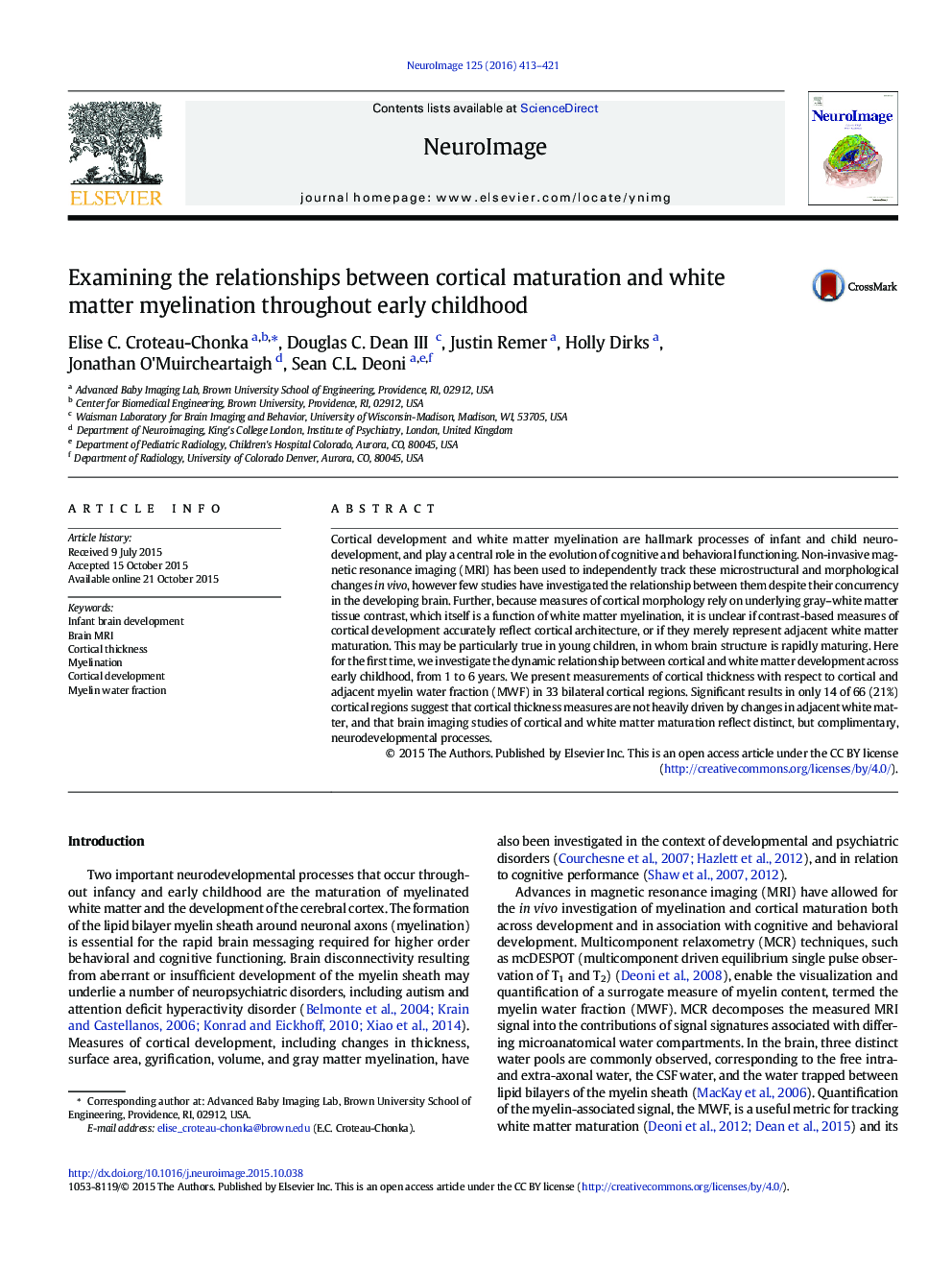| Article ID | Journal | Published Year | Pages | File Type |
|---|---|---|---|---|
| 6024115 | NeuroImage | 2016 | 9 Pages |
Abstract
Cortical development and white matter myelination are hallmark processes of infant and child neurodevelopment, and play a central role in the evolution of cognitive and behavioral functioning. Non-invasive magnetic resonance imaging (MRI) has been used to independently track these microstructural and morphological changes in vivo, however few studies have investigated the relationship between them despite their concurrency in the developing brain. Further, because measures of cortical morphology rely on underlying gray-white matter tissue contrast, which itself is a function of white matter myelination, it is unclear if contrast-based measures of cortical development accurately reflect cortical architecture, or if they merely represent adjacent white matter maturation. This may be particularly true in young children, in whom brain structure is rapidly maturing. Here for the first time, we investigate the dynamic relationship between cortical and white matter development across early childhood, from 1 to 6Â years. We present measurements of cortical thickness with respect to cortical and adjacent myelin water fraction (MWF) in 33 bilateral cortical regions. Significant results in only 14 of 66 (21%) cortical regions suggest that cortical thickness measures are not heavily driven by changes in adjacent white matter, and that brain imaging studies of cortical and white matter maturation reflect distinct, but complimentary, neurodevelopmental processes.
Keywords
Related Topics
Life Sciences
Neuroscience
Cognitive Neuroscience
Authors
Elise C. Croteau-Chonka, Douglas C. III, Justin Remer, Holly Dirks, Jonathan O'Muircheartaigh, Sean C.L. Deoni,
